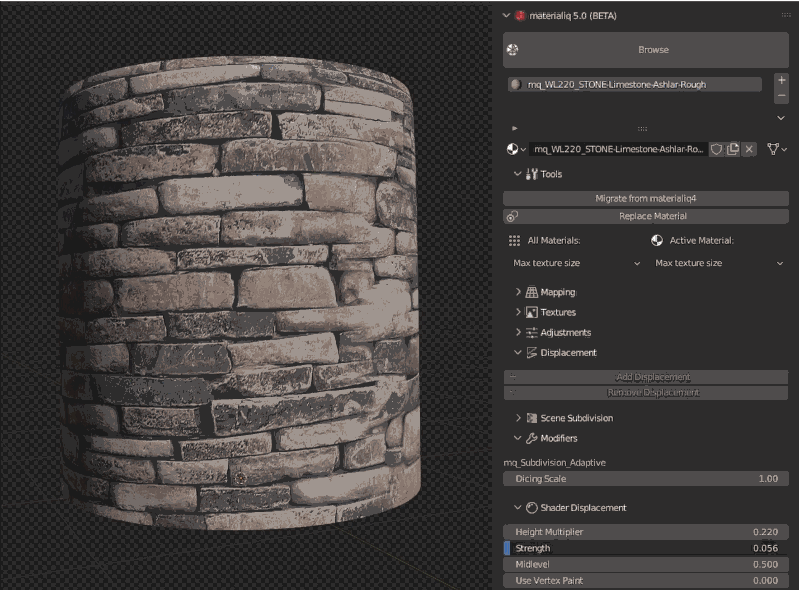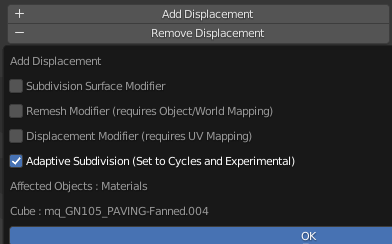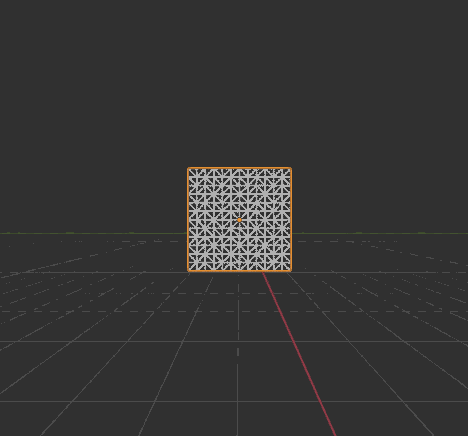Displacement¶

Three displacement methods exist, each with different accuracy, performance, and memory usage.
- Bump Only
- Displacement Only
- Displacement and Bump
Displacement is the most accurate and memory intensive displacement method.
materialiq uses Displacement Only. Bumps Only and Displacement and Bump
can be selected manually.
By default displacement is turned off to save memory and improve performance
Add Displacement¶

Displacement related settings are available in the Displacement sub-panel of materialiq panel.
Add displacement button opens settings, from which you can choose spawn type including
displacement application ways, and blender settings.
Displacement is not supported on all the materials
Types¶
There are two ways to apply displacement to an object -- Shader and Modifier. Check out more about Displacement in the Blender documentation.
Modifier¶
The Displace modifier displaces vertices in a mesh based on intensity of a texture and the amountof polygons on the mesh.
Unlike with the shader, it is visible in viewport and applicable.
Displacement can degrade viewport performance
When applying Displacement to materials that use 8K textures your viewport performance may drop. We recommend being careful with using 8K textures and displacement.
Shader¶
The Displacement node displaces vertices in a mesh based on the intensity of a texture and
adaptive subdivision.
Multi-user object data are currently converted to single users
This leads to increased memory usage. For those, it is better to use non-adaptive subdivision.
Multi-view renders can have some inconsistencies between views.

Adaptive Subdivision¶
Detects the distance of the object from the camera position. Objects closer to the camera will be
subdivided more than objects far from the camera. This is closely connected to the dicing rate.
This gives you a big optimization advantage.

Dicing rate¶
A multiplier of the scene dicing rate to determine the final size of Micropolygons in pixels.
- 1.00 = 1 polygon per 1 pixel
- 8.00 = 1 polygon per 8 pixels
In the image on the right side, you can see how dicing works

Example of dicing rate. Image from official Blender manual
Object mapping can cause problems with displacement
